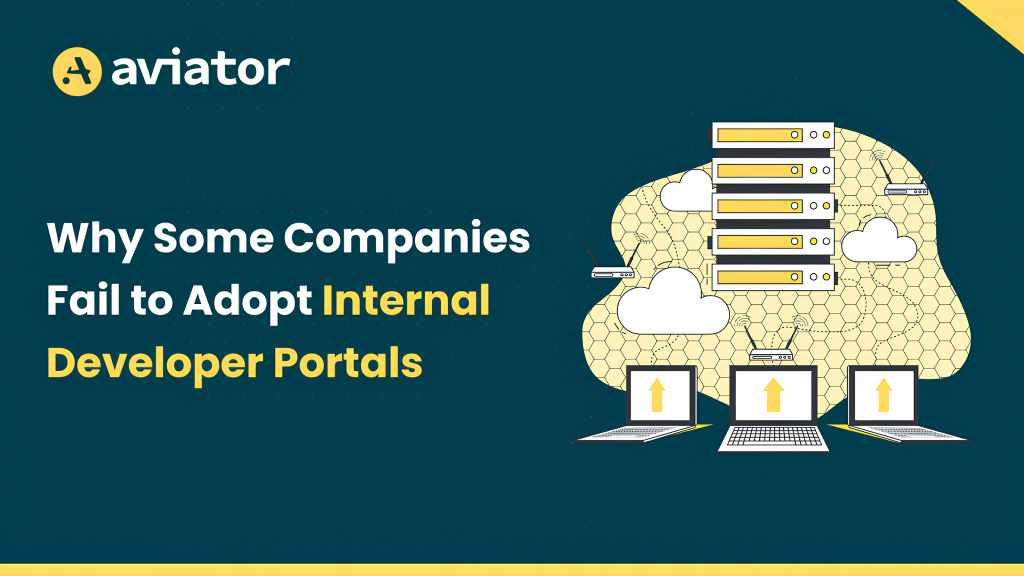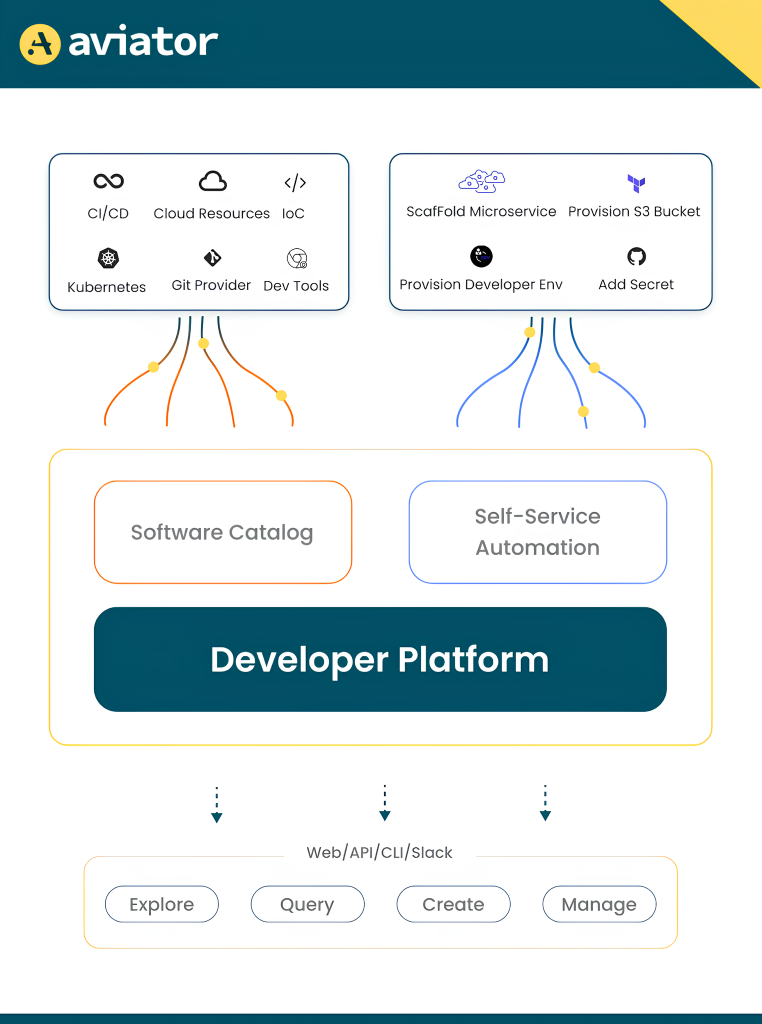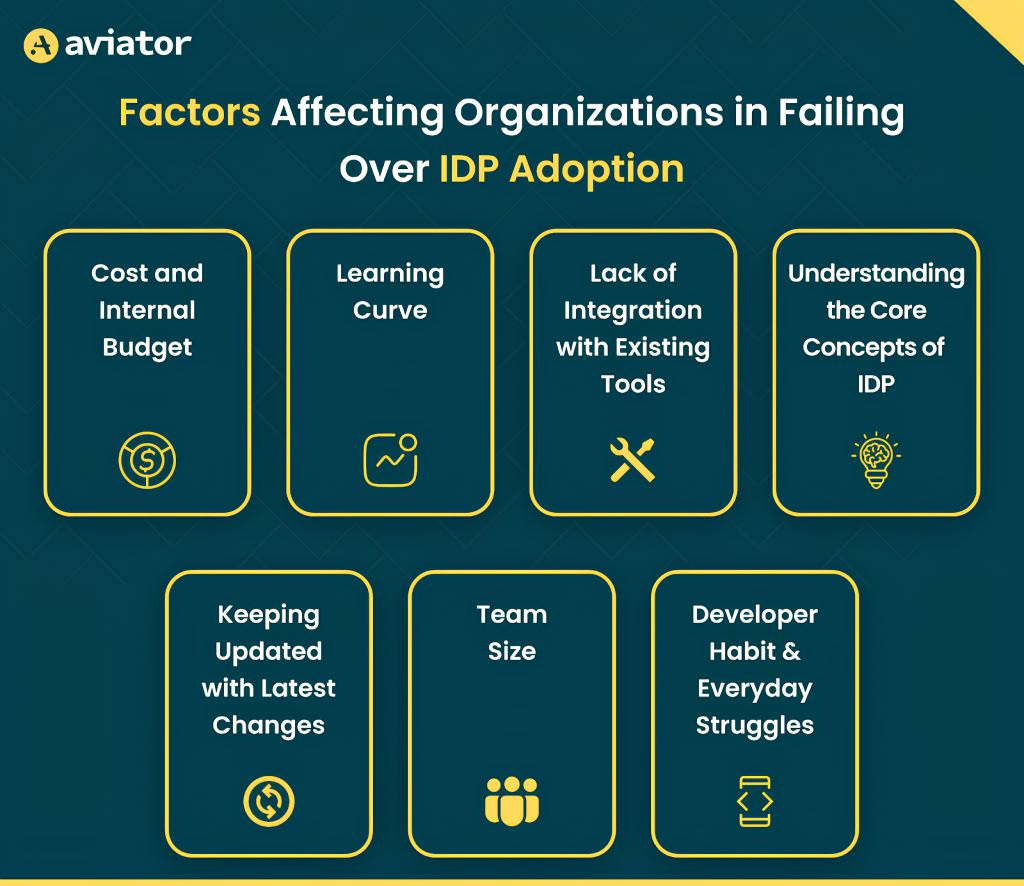Why Some Companies Fail to Adopt Internal Developer Portal
IDPs are becoming popular in the developer ecosystems. However without careful consideration and planning, some companies fail adopt them internally.

For the past few years, we’ve been hearing a lot about Internal Developer Portals (IDPs) and how organizations are adopting them. However, not all organizations succeed due to various challenges. In this blog, we’ll explore what IDPs are, their benefits, and the everyday challenges organizations face when adopting them. By understanding these hurdles and following best practices, you can make informed decisions about implementing internal developer portals to improve your development processes.
What is an Internal Developer Portal?
An Internal Developer Portal (internal developer portal) is a centralized platform designed to streamline and simplify the workflows of software development teams within an organization. It acts as a single access point for all the documentation, resources, and tools developers need to build, deploy, and manage software. This hub facilitates the efficient functioning of development processes, offering developers a connected and organized environment. According to a recent survey by Stripe, developers reported that only 68.4% of their time is productive.

As shown in this architecture image, the developer platform is positioned to be accessible to everyone in the organization, thereby boosting productivity and growth and creating a single source point for all.
Why use an Internal Developer Portal?
Gartner’s prediction conveys that by 2026, 75% of organizations with platform engineering teams will offer such portals to enhance the developer experience and speed up product innovation, a significant increase from 45% in 2023
Using an IDP boosts productivity by consolidating resources, reducing search time, and enhancing focus on coding. They standardize tools, improve collaboration, keep onboarding in place, and reduce errors. IDPs also provide process visibility, enabling managers to identifying bottlenecks, track progress, and make informed decisions using analytics and reporting.
Popular Internal Developer Portals
- Backstage by Spotify
- Features: Highly customizable, rich plugin ecosystem, strong community support.
- Pros: Open-source, extensive documentation, active development community, customizable to fit various needs.
- Cons: It requires setup and maintenance, and a steep learning curve for customization may need dedicated resources for optimal use.
- Pricing Model: Free, open-source.
- Roadie
- Features: Managed Backstage offering, zero-maintenance, custom
plugins, rapid setup. - Pros: No maintenance overhead, quick setup, scalable solution, strong support team.
- Cons: Dependent on Roadie’s infrastructure, higher cost compared to self-managed solutions, limited flexibility compared to fully open-source solutions.
- Pricing Model: Subscription-based with pricing tiers based on usage and features.
- Features: Managed Backstage offering, zero-maintenance, custom
- Qovery
- Features: Kubernetes-based, automated environments, GitOps, infrastructure as code.
- Pros: Easy deployment, integration with existing CI/CD pipelines, scalable solution, strong focus on automation.
- Cons: Complexity in advanced configuration pricing may require specialized knowledge for optimal use.
- Pricing Model: Multiple tiers of subscription based on features and usage.
- Humanitec
- Features: Dynamic environment management, workload orchestration, automated deployments, self-service infrastructure.
- Pros: Comprehensive feature set, excellent support, flexible deployment options, robust governance tools.
- Cons: Higher cost, complexity in setup, potential over-reliance on vendor Support.
- Pricing Model: Subscription-based with various tiers to accommodate different organizational needs.
- Cortex
- Features: Analytics, Scorecards, relationship visualization, real-time monitoring.
- Pros: Lots of integrations, RBAC support, templates and automation.
- Cons: No self-serve option, requires setup and maintenance, and may not cover all aspects of a typical internal developer portal.
- Pricing Model: Custom enterprise subscription tiers
Internal developer portals like Backstage and Cortex are famous for their robust features and firm support. Open-source options like Backstage offer flexibility and cost-effectiveness, allowing customization without significant expenses. Commercial options like Humanitec and Roadie provide comprehensive support, advanced features, and managed services, reducing maintenance and setup burdens.
Now, we will explore why some organizations struggle with implementing or adopting internal developer portals. Understanding these factors will help you unlock potential challenges.

Factors Affecting Organizations in Failing Over IDP Adoption
1. Keeping updated with changes
If a company neglects to update its internal developer portal, developers might face security vulnerabilities or conflicts with newer tools.
For instance, an outdated internal developer portal might not support the latest CI/CD tools or could be prone to security threats. Developers must keep the internal developer portal and its libraries up-to-date to ensure a secure and efficient development environment.
Another example that fits here is that, internal developer portals are useful for platform teams, but there are separate teams such as product team are the ones who have to maintain the information in it. This introduces a large maintenance overhead with no strong incentives for product teams to keep the information up-to-date.
2. Cost and Internal Budget
Implementing and maintaining an internal developer portal can be a significant barrier, especially for smaller organizations. Financial constraints and budgeting issues often hinder adoption due to high initial setup costs, subscription fees, and the need for dedicated resources.
A small company may need help to adopt an internal developer portal due to its high costs. For instance, a developer might delay getting the necessary tools because the company needs more money to afford the subscription fees or allocate enough budget for training and support, which can impact overall productivity.
3. Learning Curve
Internal developer portals often have a steep learning curve, impacting adoption rates. When a new internal developer portal is introduced, developers familiar with a specific coding environment (including version control systems, build tools, testing frameworks, command line interface tools, development servers, documentation, and code repositories) might find the new environment includes different tools, workflows, or integrations than what they are used to. This adjustment period can lead to challenges as they adapt to the new setup. Without proper training, developers might spend extra time figuring out the portal, which can cause hesitation and slow adoption of the new system.
4. Lack of Integration with Existing Tools
Integrating an internal developer portal with legacy systems and existing tools can be challenging. Complex integration processes will disrupt workflows. For instance, if an organization uses a DORA metrics system and this new internal developer portal doesn’t support it, then the developer may face issues with integration. Developers must spend excessive time troubleshooting, leading to workflow disruptions and decreased productivity.
5. Understanding the Core Concepts of internal developer portal
Developers who need clarification on an internal developer portal’s purpose and benefits may be cautious about adopting the new system.
Imagine a developer is introduced to a new internal developer portal and only sees a sleek interface with documentation and a few new tools. If the developer doesn’t realize that the internal developer portal also automates deployment, integrates with CI/CD pipelines, and provides a centralized place for team collaboration, they might think it’s just a fancy new documentation tool. This misunderstanding can cause them to stop adopting the internal developer portal, missing out on its full benefits like faster deployment times and improved teamwork.
6. Team Size
The development team size can impact the adoption and management of internal developer portals. Smaller teams might struggle with the additional workload, while larger teams may face coordination challenges. The resources required to manage and maintain an internal developer portal can be significant, and smaller teams may need help to allocate the necessary time and effort. A dedicated platform team can be instrumental in managing an internal platform, ensuring its successful implementation and ongoing support.
7. Developer Habit & Everyday Struggles
Developers might resist using an internal developer portal if they are accustomed to their old manual deployment methods and view the new system as an unnecessary change. For example, developers comfortable with the user-friendly interfaces of GitHub or GitLab and simple CLI tools for their daily tasks might be hesitant or vulnerable to switching to a new platform. Organizations may face challenges in convincing these developers to adopt new tools and processes, leading to slow adoption of the internal developer portal.
Is it worth it?
Performing a cost-benefit analysis means weighing the potential benefits of an internal developer portal, like faster development cycles, reduced time to market, and improved developer productivity, against the costs of setting it up and maintaining it. By quantifying these benefits and comparing them to the investment required, you can make informed decisions about whether the internal developer portal will meet your goals and deliver a strong return on investment for your development team.
Key Points to Consider
1. Efficiency Gains
Does the internal developer portal make development faster and more efficient?
2. Reduced Time-to-Market
Will the internal developer portal help you release products more quickly?
3. Improved Developer Productivity
Does the internal developer portal streamline workflows and reduce bottlenecks?
4. Cost vs. Benefits
Are the long-term benefits of the internal developer portal worth the initial investment and ongoing maintenance costs?
Conclusion
Internal Developer Portals (IDPs) offer significant benefits in efficiency, collaboration, and standardization. But successful adoption requires careful planning, proper training, and ongoing support. By addressing common challenges and using best practices, organizations can enhance their software development process.
Although these internal developer platforms offer powerful capabilities to the development teams, getting the true value from these IDPs require heavy investment and careful considerations. It involves coordinating various aspects of software creation, from source code management to deployment. Thus one should assess their internal practices and plan out proper use-cases before deciding to adopt an IDP.









